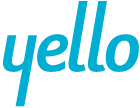4 Talent Acquisition Predictions for 2019 and Beyond
The beginning of 2019 places us in a new year and at the foot of the next decade. What should we expect in the rapidly converging worlds of HR and technology? Here’s a roundup of influential voices across the business, HR and technology spaces on the technologies and trends to be on the lookout for in 2019, 2020 and beyond.
Say goodbye to the 9-5
Remote workers and flexible schedules are nothing new, but business magnate Richard Branson of Virgin sees the typical 40-hour workweek finally diminishing:
“Could people eventually take three and even four day weekends? Certainly. Will job-sharing increase? I think so. People will need to be paid the same or even more for working less time, so they can afford more leisure time. That’s going to be a difficult balancing act to get right, but it can be done… Most people are either already working flexibly, or wish they could. Choice can empower people to make good decisions and feel positive about their workplace, helping to keep great employees and attract new talent. If we all work smarter, we won’t have to work longer.”
With the rise of coworking spaces, comprehensive online collaboration tools, and digital work that has no need for a physical location, businesses and HR departments should be ready to embrace flexible, remote scheduling from the ground up.
According to one report on the future of the workplace, 54 percent of employees would jump to an opportunity at another company that offers more work flexibility. To attract top talent, offering unconventional schedules or the ability to work from home won’t just be a nice perk — it will become the norm.
Prepare to embrace neurodiversity
Businesses should already be striving to hire a workforce of employees with a diverse background of educations, life experiences and skills.
To become as inclusive as possible going forward, Nish Parikh of diverse workforce employer Rangam points to the growing awareness for the need to hire employees of neurodiverse backgrounds:
“Fifty thousand adults with autism spectrum disorder are entering the job market every year, so there’s plenty of opportunity to recruit these individuals for applicable roles. Candidates are developing new skills and in doing so are making themselves employable for a variety of positions. You should constantly tap into hidden potential to unearth new strengths.”
Disability inclusion in the workplace lets employers take full advantage of its employees’ unique capabilities. As highlighted in the 2018 Yello Diversity Study, more than half of all employees would consider looking for a job if their employer wasn’t committed to offering a diverse workplace. Employees also don’t just break down diversity into a matter of race or ethnicity, taking a more holistic approach to believe it encompasses more factors like age, gender, and personality.
But being prepared to hire neurodiverse candidates in 2019 requires a commitment from recruiters and hiring managers to ensure the recruitment process is accessible to those with different information-processing capabilities. Taking steps to identify jobs that could be right for neurodiverse candidates, offering job descriptions in different formats like short videos, and preparing existing employees to accommodate new hires with unique social skills are just a few ways employers can jump-start efforts to truly diversify their workforce.
The conscious uncoupling of HR and recruitment
Recruiting and employer branding guru James Ellis predicts recruitment will break out from the HR department and into its own separate entity:
“2019 Prediction: This is the year a handful of businesses pull recruiting out from HR and either treat them as a separate team that reports to the CEO, or move them to exist with the lines of business. This experiment will drive recruiting innovation for a decade.”
While talent acquisition has commonly lived under the human resources umbrella, detailed analytics and powerful recruitment technology has continued to push recruiting into its own, highly-specialized arena.
Finding and recruiting tomorrow’s top talent requires dedication and a laser-like focus on building recruitment marketing campaigns, managing talent pipelines, and staying in touch with candidates throughout the entire recruitment process. Separating recruitment from HR could give recruiters space to experiment, grow and ultimately pinpoint candidates with greater accuracy.
A deeper convergence of AI
From improving candidate search capabilities to automatically scheduling an entire interview day, artificial intelligence continued making recruitment tech more capable than ever in 2018. Josh Bersin of Bersin by Deloitte sees a future filled with the further convergence of AI, automation and recruiting technology into what he describes as “HR in the flow of work:”
“From my perspective, we’re moving into a new era. One where HR technology is no longer a forms automation system, but is now becoming a true “system of productivity.” All these wonderful HR apps should be natural, easy, and integrated into our work environment – we should be able to chat, click, or swipe and the HR tools we use should be as integrated into our lives as email, text messaging, or our favorite mobile app. AI and analytics needs to be invisible and intelligent, and the interfaces should “talk to us” in our own native language, so we can use the systems without wasting our time.”
Combined with better data and collaboration tools, AI’s power and persistence is ready to start integrating with a recruiter’s tech stack. With time, it’s easy to imagine AI-based smart tools taking care of the brunt of a recruiter’s more tedious legwork — screening, messaging and coordinating logistics with candidates — in order to free them up to spend more time directly with the candidates themselves.
